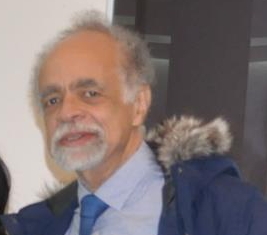
Short biography:
Dr. Duane received his Ph.D. in atmospheric physics at the Univ. of Colorado, Boulder. His thesis research centered on the prediction and interpretation of new teleconnection patterns using the nonlinear dynamics paradigm of synchronized chaos. This was followed by post-doctoral appointments at the National Center for Atmospheric Research (NCAR) and the Institute for Mathematics and its Applications (IMA), Univ. of Minnesota, where he continued in the same line of research.
For the past ten years, Dr. Duane has worked on grants to develop the “supermodeling” method, that he conceived, to improve climate modeling by allowing models that make different predictions to synchronize through a modest exchange of data. He has also pursued secondary research interests in quantum foundations and in the theory of neural networks, both also based on nonlinear synchronization. The supermodeling work has been done with a multi-institutiona, inter-disciplinaryl team, first centered at the Macedonian Academy of Sciences and Arts (MANU) and currently at UiB.
Abstract:
In a supermodel, different models of the same objective process exchange information in run-time, effecting a form of inter-model data assimilation, with learned connections, that brings the models into partial synchrony and resolves differences. It has been shown [Chaos Focus Issue, Dec. ‘17], that supermodels can avoid errors of the separate models, even when all the models err qualitatively in the same way. They can thus surpass results obtained from any ex post facto averaging of model outputs.
Since climate models differ largely in their schemes for parametrization of sub-grid-scale processes, one would expect supermodeling to be most useful when the small-scale processes have the largest effect on the dynamics of the entire model. Inter-scale interactions are expected to be greatest near critical points of the system, toward which natural systems commonly tend. Supermodels are therefore expected to be particularly useful near such states.
We examine this hypothesis first in a toy supermodel consisting of two quasigeostrophic channel models of the blocked/zonal flow vacillation, each model forced by relaxation to a jet flow pattern, but with different forcing strengths. One model, with low forcing, remains in a state of low-amplitude turbulence with no blocking. The other model, with high forcing, remains in the state defined by the forcing jet, again with no blocking. Yet a model with realistic forcing, and the supermodel formed from the two extreme models by training the connections, exhibit blocking with the desired vacillation. The amplitude or energy spectrum of the supermodel exhibits the power-law dependence on wavenumber said by Bak et al. [‘87] to be characteristic of critical states, over a larger range of scales than does either of the individual models.
Then we turn to the more realistic case of a supermodel formed by coupling different ECHAM atmospheres to a common MPI ocean model. The atmosphere models differ only in their schemes for parametrizing small-scale convection. The weights on the energy and momentum fluxes from the two atmospheres, as they affect the ocean, are trained to form a supermodel. The separate models both exhibit the error of a double inter-tropical convergence zone (ITCZ), i.e. an extended cold tongue. But the trained supermodel (with positive weights) has the single ITCZ found in reality. The double ITCZ error in one model arises from a weak Bjernkes ocean-atmosphere feedback in the 2D tropical circulation. The double ITCZ in the other model arises from a more complex mechanism involving the 3D circulation pattern extending into the sub-tropics. The more correct supermodel behavior, and associated ENSO cycle, are reflected in an energy spectrum of form that is more like that of reality than are the spectra for the separate models, which are similar to each other. It thus appears that supermodels, in avoiding similar errors made by different constituent models for different reasons, are particularly useful both for emulating critical behavior, and for capturing the correct properties of critical states.
Arranged date for the seminar talk: Oct 05, 2020 at 14:15. This will be a zoom meeting.
